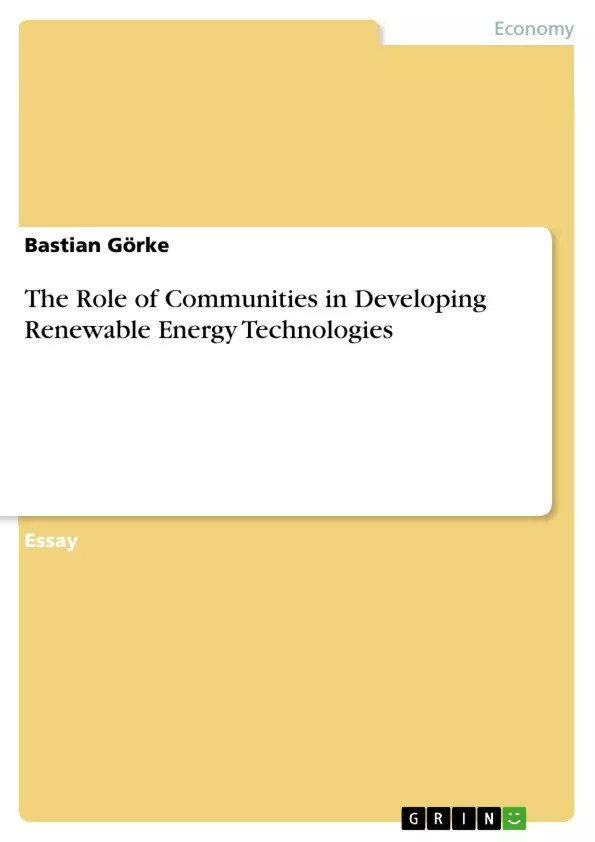This paper considers in closer details the role of communities in developing renewable energy schemes.
Resource scarcity and climate change have introduced the necessity to replace the current energy supply system. This system is based on the combustion of fossil fuels and has been developed to an ever more centralised and inefficient stucture with a few giant power plants and a complex arrangement of distribution lines. As energy generation and energy consumption have been spatially separated by huge distances, consumers are anticipated to have lost the right idea of energy and the implications of its generation.
Inhaltsverzeichnis (Table of Contents)
- Introduction
- Communities
- Community of Location
- Community of Interest
- Involvement of Communities
- Local Benefits
- Hard Benefits
- Soft Benefits
- Appraisal of community involvement
- Conclusion
Zielsetzung und Themenschwerpunkte (Objectives and Key Themes)
This paper investigates the role of communities in developing renewable energy schemes. It argues that community involvement is crucial for the successful implementation of these schemes, but explores the potential limitations and challenges associated with this approach.
- The importance of community involvement in renewable energy development
- Different types of communities and their involvement in renewable energy projects
- The benefits and challenges of community involvement, including local benefits and community management
- The impact of community involvement on achieving climate change targets
- The need for a critical appraisal of community involvement in the context of renewable energy development
Zusammenfassung der Kapitel (Chapter Summaries)
The introduction sets the context for the paper by discussing the need for renewable energy sources as a replacement for fossil fuels. It introduces the concept of the "soft energy path" and emphasizes the growing importance of local energy production and consumption.
The chapter on communities defines the concept of community and differentiates between communities of location and communities of interest. It explores the changing nature of these communities in the modern context and discusses their potential impact on renewable energy projects.
The chapter on community involvement discusses the various ways in which communities can be involved in renewable energy projects. It explores different models of engagement, including information-led and ownership-led approaches, and examines the role of local benefits in promoting community acceptance of projects.
The appraisal of community involvement critically examines the potential limitations and challenges associated with community involvement in renewable energy development. It considers the economic viability of these projects, the potential for community management, and the overall impact on achieving climate change targets.
Schlüsselwörter (Keywords)
The paper focuses on the role of communities in renewable energy development, exploring concepts such as community involvement, local benefits, community management, and the impact of community participation on achieving climate change targets. It also delves into the different types of communities, including communities of location and communities of interest, and their respective roles in the planning and implementation of renewable energy projects.
- Citation du texte
- Bastian Görke (Auteur), 2006, The Role of Communities in Developing Renewable Energy Technologies, Munich, GRIN Verlag, https://www.grin.com/document/1030693



